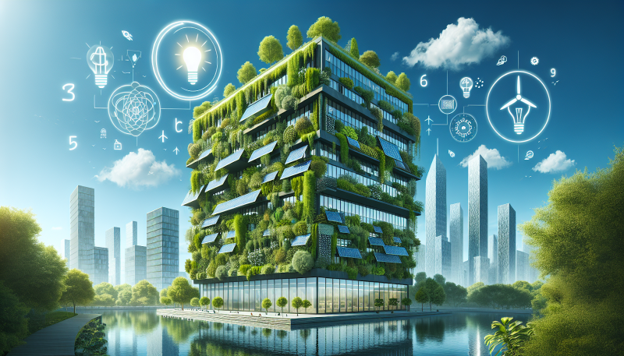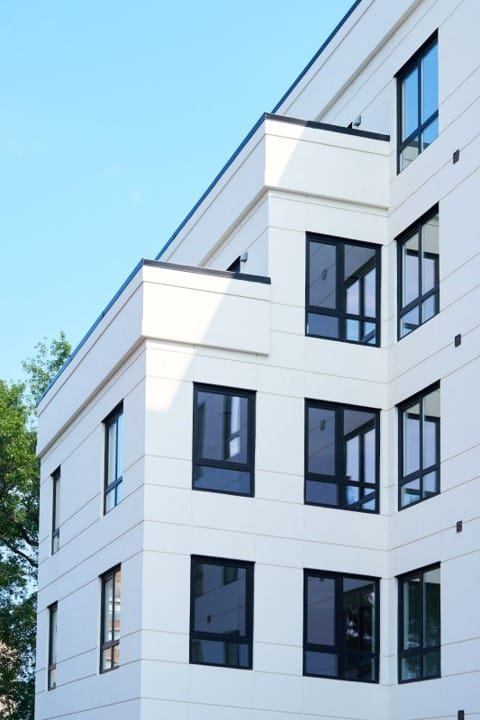Greenhouse Gas (GHG) emissions including CO2, CH4, N2O, and others, are a significant concern in climate change. Residential and commercial buildings are major contributors, constituting nearly 29% of total U.S. emissions, counting both direct and indirect emissions from electricity. These emissions mainly stem from energy consumption for heating, cooling, and lighting.

Aging buildings, coupled with population and economic growth, are expected to drive substantial increases in the building stock. Efforts to decarbonize require immediate action, including efficiency standards and stronger building codes, which have already shown notable improvements from 2007 to 2017. Integration of smart meters enables tailored energy demand, potentially reducing emissions.
Despite projections of growth, continued efficiency enhancements are expected to mitigate emissions growth in the commercial sector and drive modest reductions in the residential sector through 2050. However, increasing demand for cooling in a warmer climate may affect future emissions. In 2015, direct CO2 emissions from the U.S. building sector totaled 565.8 million metric tons, contributing approximately 8.6% of total U.S. greenhouse gas emissions. Factoring in indirect CO2 emissions from off-site electricity, residential and commercial buildings collectively accounted for 29% of total U.S. emissions.
-
Construction: The processes and materials involved.
-
Energy Use: For heating, cooling, lighting, and operating appliances.
-
Methane and Refrigerants: Leaks from heating and cooling systems.
Decarbonizing buildings involves strategies aimed at reducing these human-made GHG emissions throughout a building’s life cycle, from design and construction to operation and end-of-life disposal. It encompasses two main types of carbon:
-
Operational Carbon: Emissions related to energy used to operate a building.
-
Embodied Carbon: Emissions associated with the production, transportation, installation, maintenance, and disposal of building materials.
By focusing on both operational and embodied carbon, decarbonization efforts aim to significantly reduce the environmental impact of buildings, helping to mitigate climate change and promote sustainability in the built environment.
The Benefits of Decarbonization Efforts
Decarbonizing buildings is not just about reducing greenhouse gas emissions; it also brings a multitude of benefits that extend to economic, health, and social aspects.

Here are some key advantages:
-
Economic and Energy Savings
-
Retrofitting buildings with energy-efficient technologies can lead to significant cost savings. For example, every $1 invested in energy-efficient appliances and retrofits can save $2 in avoided electricity generation and distribution costs.
-
High-performance windows alone could reduce U.S. annual energy use by 1.7% and CO2 emissions by 1.9% by 2050. In the EU, fitting all buildings with such windows could save 31% of the annually consumed energy.
-
Electrification of appliances can reduce household energy costs significantly, with estimates showing savings up to $377 per household.
-
-
Health and Environmental Benefits
-
Improved indoor air quality through the use of electric appliances, reducing the risk of asthma in children and decreasing home fire hazards.
-
Zero-carbon buildings can improve public health by reducing the combustion of fossil fuels, which worsens air quality.
-
-
Social and Employment Advantages
-
Decarbonization strategies support the preservation of affordable housing by lowering operating costs.
-
Energy efficiency measures can create numerous jobs, with the installation of key appliances potentially creating over 450,000 installation jobs and 800,000 related jobs in the U.S. over 10 years.
-
These benefits showcase the multifaceted value of building decarbonization, highlighting its role in fostering a sustainable, healthy, and economically vibrant future.
Decarbonization Strategies

Decarbonization strategies for buildings involve a multifaceted approach to reduce greenhouse gas emissions and enhance energy efficiency throughout a building’s life cycle. Key strategies include:
-
Efficiency Measures and Building Electrification: Prioritizing energy efficiency in existing buildings through the adoption of insulation, ventilation, and LED lighting can significantly reduce energy consumption. Electrification of building systems, such as replacing gas equipment with electric technology, supports a reduction in carbon emissions by leveraging cleaner energy sources.
-
Renewable Energy Integration: Utilizing renewable energy sources, including on-site generation like solar panels, off-site generation, and renewable energy purchases, contributes to a decrease in reliance on fossil fuels. This strategy aligns with efforts to decarbonize the electrical grid, ensuring buildings draw from cleaner energy sources.
-
Operational Improvements and Embodied Carbon Reduction: Enhancing operations and maintenance practices, along with selecting low-GWP refrigerants and minimizing their volume, can lower operational carbon. Addressing embodied carbon through improved design, equipment applications, and prioritizing materials with lower carbon footprints during construction and renovation phases are critical steps in reducing a building’s total carbon emissions.
These strategies, supported by new decarbonization policies and continuous development of research, standards, and guidelines, pave the way for achieving significant reductions in building GHG emissions, contributing to global decarbonization efforts.
How Windows Help In Building Decarbonization
Windows play a pivotal role in building decarbonization by influencing both the comfort of occupants and the energy efficiency of buildings.

Inefficient windows can lead to increased energy bills and a higher carbon footprint, underscoring the importance of high-performance windows in decarbonization efforts. High-performance windows are equipped with:
-
Advanced Technologies: Including high-performance frames, daylighting capabilities, and highly insulating window glass units.
-
Enhanced Glazing Packages: Incorporating secondary and third glazing and higher performing inert gas fills to improve insulation.
-
Dynamic Facades and Control: Utilizing dynamic window facades and improved control methods to adjust to environmental conditions.
These technologies not only contribute to substantial energy savings but also reduce peak electricity demand, which is crucial for enhancing a building’s overall energy performance. Furthermore, windows account for approximately 10% of energy use in buildings but influence areas that comprise 40% of building energy use, highlighting their significant impact on energy consumption.
Electrochromic windows, a novel window technology, exemplify the advancements in this field. They offer:
-
Adjustable Tint: Allowing for controlled sunlight penetration, which can lead to reduced electricity bills, enhanced privacy, and improved views.
By integrating these advanced window technologies, buildings can achieve greater energy efficiency, contributing to the reduction of greenhouse gas emissions and promoting renewable energy use within the built environment.
How Vistaza Can Help
Vistaza plays a crucial role in the decarbonization of buildings, aligning with global efforts to reduce greenhouse gas emissions and promote sustainable communities. Here’s how Vistaza contributes:
-
Collaboration with Sustainability Programs
-
Vistaza demonstrates its commitment to sustainability by supporting the Department of Energy’s Zero Energy Guidelines. The Department of Energy’s Zero Energy Buildings Resource Hub offers valuable information on energy-efficient design and renewable energy technologies, enabling developers and architects to create Net Zero Energy Buildings (NZEBs).
-
-
Supporting the Net Zero Emissions Goal
-
The Paris climate agreement has set a bold target for countries to achieve net zero emissions by 2050. Vistaza supports this global commitment by offering products and solutions that contribute to the reduction of greenhouse gas emissions in the building sector.
-
-
Certified Solutions for Decarbonization
-
Vistaza’s windows are not only designed with energy efficiency in mind but are also NFRC and Energy Star certified. This certification ensures that their products meet stringent criteria for reducing energy consumption and GHG emissions.
-
By integrating Vistaza’s certified windows into building designs, developers can significantly enhance energy efficiency, reduce operational carbon, and support the global efforts towards achieving net zero emissions by 2050. Reach out to our team of experts to learn more about controlling and reversing your building’s carbon footprint.




